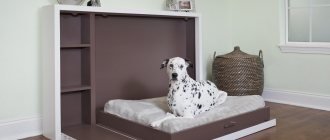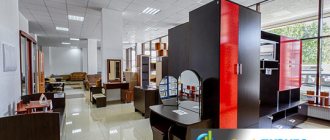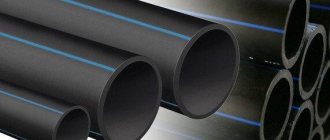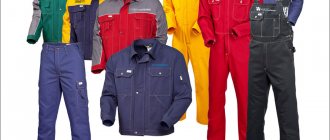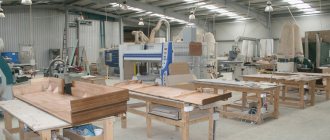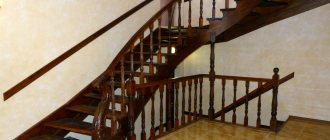This business is as old as the hills. Wicker chairs are found in Egyptian pyramids. In Ancient Rus', wicker furniture was as popular as bast shoes. Later, wicker furniture was undeservedly forgotten.
Recently, the fashion for wicker furniture has begun to return again. Moreover, wicker furniture began to be imported to us from Europe and sold at crazy prices. Ornate wicker chairs and glass-topped tables cost thousands of dollars per set.
“This furniture business idea is ideal for people with limited money,” says entrepreneur Yegor Kozlov from Vologda. “Smart machines and technologies are not needed here. Everything is done the same way as two hundred years ago. But the fact is that this trade is based on manual labor, which cannot be automated. Manual labor will always be valuable in the age of machines.”
In other words, there are all the prerequisites that by starting a business weaving furniture from wicker, you can make good money.
1. Willow tree 2. Weaving is interesting 3. Tricks of the trade
Types of wicker furniture
If we consider wicker furniture from the point of view of the materials used, it can be divided into:
- made entirely from plant materials (stick furniture with various types of weaving;
- solid wood furniture with decorative braiding);
- combined - furniture in the production of which, in addition to weaving rods, chipboard, plywood, frames made of wood, metal, plastic and soft elements for sitting and lying are used.
With the help of weaving they make:
- chairs, stools – mostly hard, non-dismountable;
- armchairs, chaise lounges, sofas, couches, beds, cradles - can be either soft or hard;
- tables – coffee tables, dining tables;
- shelves, chests of drawers, cabinets, chests.
Reviews of artificial rattan furniture
Buyers note that tables and chairs made from artificial wicker are practically no different from furniture made from natural raw materials. At the same time, artificial rattan has a huge number of advantages. This is the best option for the street. After all, the material does not deteriorate under the influence of direct sunlight or precipitation. This cannot be said about natural raw materials. Garden furniture made from artificial rattan can last for years, while chairs and tables made from natural materials quickly lose their shape. In addition, artificial thread is much cheaper.
Manufacturers also share the benefits of making furniture from artificial rattan. All you need is a machine for making synthetic thread. The production employees can do everything else manually. In order to open your own business, you do not need to have a large start-up capital.
Raw materials for the production of wicker furniture
Wicker furniture is made from any climbing plants with a fairly dense and flexible base.
For the production of wicker products the following can be used:
- willow raw material is the general name for preparations from a number of plants, which include: vine, willow, willow, shelyuga, willow, sedge, willow. Three-year-old twigs (and older) are used for the furniture frame, and one-year-old vine is used for the weaving itself. Therefore, two types of raw materials are in demand in production: willow sticks for the frame, with a diameter of 10-40 mm and flexible stems-rods with a root thickness of up to 10 mm (Fig. 2);
- roots of pine, spruce, fir, cedar - harvested at cutting sites and uprooting sites;
- birch bark - a layer of birch bark, used for weaving decorative furniture elements. Birch bark strips, 20–40 mm wide, are harvested in the spring and summer from growing trees intended for felling or just felled. This birch bark has a beautiful natural shade (pink, yellowish-white), which lends itself well to coloring and goes well with other plant materials: vine, cattail, rattan;
- rattan – shoots of the rattan palm;
- bamboo is a tropical (subtropical) grass of the cereal family;
- linden bark - bast in the form of ribbons of various widths is used both for decorative weaving and for connecting individual parts of the product into a single whole;
Today, rattan and willow raw materials are widely used in industrial production. Full cycle production includes independent preparation of rods with subsequent processing (sanding and drying). But you can also use ready-made raw materials, cleared of bark and processed to give the desired size and shape (round, flat, flat-convex rods-blanks). There is also a special ready-made material for making seats for sofas, chairs, armchairs - reed fiber or rattan bark, which is split into fibers, “spun” on special machines into linens and sold in rolls.
The advantage of a wicker furniture business is its accessibility: you can produce products on an industrial scale or organize piece production to order - it all depends on the volume of sales and the number of working craftsmen.
Wicker furniture market development trends
Reasons for growth and world leaders
According to data for 2012, the volume of the wicker furniture market in Russia exceeded 50 million rubles. It is necessary to take into account that many handicraft industries and “at-home” craftsmen do not officially register their business, so real indicators differ significantly from statistical ones. Of course, on the big side.
But, undoubtedly, the domestic wicker furniture market is actively developing. In 2011-2012 alone, its volume increased by more than 35% (in monetary terms). The reason for this growth was the increase in the volume of dacha and cottage construction. At the same time, owners of new private houses prefer to immediately purchase sets and sets of wicker furniture for furnishing premises and personal plots. And among “old” owners there is a tendency to abandon plastic (which until recently was considered the best option for country and garden furniture) in favor of much more comfortable, strong, environmentally friendly and wear-resistant wicker furniture.
In the world market of wicker products, leadership traditionally belongs to Asian countries: Indonesia, China, Malaysia, and the Philippines. And Russia is an exception here: domestic production occupies no more than 35% of the market volume. Everything else is import.
Asian manufacturers have supplemented their undeniable competitive advantages in the form of low cost of raw materials (rattan and bamboo), a large amount of cheap labor trained in weaving techniques by actively introducing machine weaving, which reduces the quality of products, but allows them to increase volumes and reduce costs. In addition, most Asian countries prohibit the export of raw materials or impose strict restrictions on exports. Therefore, the domestic manufacturer uses mainly local raw materials - willow vine.
Structure of the Russian wicker furniture market:
- rattan furniture – 58%;
- wicker furniture – 31;
- bamboo furniture – 7%;
- furniture made from other materials for wickerwork – 4%.
Market prospects
Industry development trends:
- replacing expensive imported raw materials with independent procurement of domestic ones;
- reduction in imports. In 2012, the Indonesian government announced a moratorium on the export of rattan raw materials. This has significantly reduced the production of wicker furniture by other countries that do not have their own raw material base. Many factories even in the Asian region (for example, China) have converted to the production of furniture from bamboo or artificial rattan. European manufacturers - for the production of furniture from solid wood with decorative rattan braiding, remaining in production reserves;
- use of machinery for mass production of wicker furniture;
- tracking fashion trends - unlike Asian manufacturers, local entrepreneurs have the ability to quickly respond to changes in consumer demand;
- development of new furniture designs that would allow us to move away from the stereotype that “wicker” is outdoor furniture for cafes and furnishings for a summer house, as a result of which sales have a pronounced seasonality. In Europe, wicker furniture has long been recognized as comfortable and environmentally friendly for furnishing apartments - products from famous Italian and Spanish furniture companies (Roberti Rattan, Bonacina, Gabar, Rattan Wood, Rattan Deco) cost as much as luxury furniture. The price of an imported chair is about $450, a two-seater sofa is from $1,300, a set of a pair of armchairs and a coffee table is from $2,000. In our country, the direction of “wicker furniture for the home” is just beginning to develop.
In general, over the next 5 years, experts predict the growth of the domestic wicker furniture market by 25-30% annually.
Financial calculations
To set up a home business, you will have to spend a certain amount.
Main expenses:
- Taxes;
- Renting a retail outlet or promoting a website on the Internet;
- Transportation costs for finished products.
You can cut costs if you reach an agreement with stores and sell your products. As a result, you can save on renting a retail outlet and transporting products.
For example, in one day you make 2 tables for 6 thousand rubles. For the sale of products, you will pay the store 20% of its cost, as well as 6% tax for conducting business activities. For a month it will be approximately 35 thousand rubles. This is your net income.
Equipment for the production of wicker furniture
Depending on the complexity of the technological process, hand tools and machines are used in the production of wicker furniture. The braider's workplace is a stable table 750 mm long, up to 65 0 mm high and 400-450 mm wide with drawers for storing tools.
Manual equipment for mechanical processing of furniture includes:
- hand saws;
- shmol (for sharpening ribbons to width);
- plows;
- clamps (steel plates for bending or straightening rods);
- bit;
- iser (a cone-shaped steel plate for aligning rows in products and thickening the weave);
- chisels;
- drills, drill bits;
- screwdrivers;
- emery skins;
- knives and other tools.
As for automated production , this does not exist at the moment.
There are only machines whose prototype was weaving (Loom-technologies), but for natural raw materials such technologies were not justified in terms of quality: even weaving a simple fabric after stitching is prone to deformation, and precise fitting of the frame with uniform tension of the braid along the entire length is possible can only be achieved manually.
Technological process for manufacturing wicker furniture
Modern wicker furniture is not just a piece of furniture made from natural plant materials. The design can combine wood, leather, various accessories and even glass.
But the classic technology for the production of wicker furniture consists of the following steps:
- mechanical processing of wood (cutting, bending, planing, grinding, joining parts with screws, knitting);
- heating wood;
- drying;
- weaving;
- gluing;
- decoration and varnishing.
Stages of weaving furniture
Let's take a closer look at how wicker furniture is made from wicker:
1. The cheapest and most accessible raw material in our latitudes is willow vine. It is collected in forests, swamps, and river backwaters. It is very simple to check whether willow is suitable for weaving or not: before cutting the rod, bend it at a right angle. If it doesn’t break, it means the raw material is suitable for harvesting.
Willow harvesting ends as soon as buds appear on the vine. Depending on the period of cutting, the color of the raw material also changes: in the cold season the vine has a creamy tint, and in the summer it is white, the most sought after. But cutting willow in warm weather is not recommended: the butt (remnant of the twig) does not heal for a long time and does not produce new shoots. Therefore, the official harvesting period for vines is late autumn (from the end of October), winter and early spring. And to achieve a snow-white shade, the raw materials are bleached.
Stage of cleaning the rod from bark
After cutting, the rod is sorted and sent for debarking. Cleaning is possible in two ways:
- cold - to “revive” the rods, they are soaked in ordinary cold water to cause the juices to move. This method does not require any special equipment; the rods can be soaked both in bathtubs and natural reservoirs. But for this method, raw materials that have retained at least 25-30% of the original moisture content are suitable. Therefore, on an industrial scale, the hot cleaning method is more in demand;
- hot. Without “cooking” it is almost impossible to peel off the bark without damaging the rod. Therefore, the sorted rods are loaded into a special container cage and lowered into a boiling “bath”, in which the raw materials are kept for about 2 hours. During this time, the hard bark softens and swells (Fig. 4).
The second method, more suitable for small production, is cooking in a kettle in the open air. A small ditch is dug under the metal container and a fire is built in it. Water is boiled and rods weighed down are immersed in it so that they do not float above the surface.
Sanding the rod
Next, the steamed rods are sent for sanding. The barked rod should be completely clean along its entire length, with a creamy shiny surface. A high-quality rod cannot have breaks, scratches or other mechanical damage.
And such sanding can only be done manually, in the old fashioned way, with the help of special pincers through which the rod is “driven” along its entire length, which makes subsequent cleaning easier. The whiteness, elasticity and density of the rod depend on the method of its cleaning and subsequent drying.
Whitening process
To bleach the rods, use a special solution: bleach (1 part) is mixed with water (15 parts) diluted with two percent sulfuric acid. Bleaching with sulfur is also known. To do this, take 60 grams of sulfur per 1 m3 of wood, set it on fire and place it in a sealed chamber for 3-6 hours.
Drying prepared rods
The debarked rods are sent to a dryer - a special room where the temperature is maintained at about 60-70 C°. Here the raw materials are kept for at least 20 hours, after which they are ready for use.
In the warm season, the cleaned rod can also be dried in the sun (at the same time using the natural bleaching mechanism). True, drying in such conditions will last at least 3 days, but it will not require special equipment. During the rainy season, the rods are dried under shelters for at least 6-7 days.
Manufacturing of furniture frames
Next, the furniture frame is made. To do this, a large-diameter vine is leveled with a clamp, bent or bent (depending on the structural features of the furniture). Using the same jig, the rods are bent into the necessary parts. Then legs, crosses and other structural parts are nailed to the frame.
The frame is braided with split vines
Afterwards, the frame is braided with vine, split on a special machine into three flexible dense strips along the length of the rod. Manual separation is also used: for this, the rods are soaked in water for 4-7 hours (depending on the thickness), after which they are split into 3-4 parts (tires) using splitters.
Choosing a weaving technique
The craftsman, when creating a piece of furniture, takes into account its purpose, shape and permissible weight load. Based on these parameters, he selects the most optimal weaving technique.
Moreover, even in one product several types of weaving can be used at once:
- simple (Fig. 8);
- thick;
- solid;
- rare;
- openwork (Fig. 9);
- layer-by-layer (Fig. 10);
- in rows (Fig. 11);
- squares (Fig. 12);
- string (Fig. 13);
- bending (Fig. 14).
Rice. 8
Rice. 9
Rice. 10
Rice. eleven
Rice. 12
Rice. 13
To ensure that the rods bend well, they are moistened with water during the weaving process, after which the finished products are dried again.
Connecting wicker parts
After weaving, the parts are connected in one of the following ways:
- simple overlay or trimming of wood by 1/3 or 1/4 of the thickness of one part in relation to the width of another part;
- corner connections (overlay);
- overlay with cutting and bending;
- connection of two parts using an oblique cut;
- girth fastening;
- connection by fire;
- tricks;
- leggings
Varnishing of wickerwork
After processing the frame with braid, forming parts using various weaving techniques, assembling and subsequent drying and grinding, the time comes for the next stage - varnishing the product. For this purpose, nitrocellulose varnishes are used (for example, NTs-218,222,223,224), as well as paraffin-free polyester (PE-232,247,250). Such varnishes dry well and make the surface glossy and shiny.
After drying for 18-24 hours, the product is sent to the finished goods warehouse. Since weaving rods are, in fact, the same wood, they can not only be varnished, but also stained and painted in any color, which gives wide possibilities in terms of design.
Features of organizing a business for the production of wicker furniture
Legal form of business
For legal registration, it is enough to register an individual entrepreneur, because the end consumer is mainly individuals.
Official activity
To conduct business activities, you must indicate the following OKVED codes:
- 36.14 – Production of other furniture;
- 52.44.1 Retail sale of furniture.
Room
In a workshop for the production of wicker furniture it is necessary to provide:
- a room for drying vines (outside - in the warm season, in a well-heated drying room - in winter);
- room for painting and varnishing;
- main production workshop.
There are no special requirements for the premises: heating, communications, access roads.
State standards
To get started, familiarize yourself with GOSTs:
- 25552-82 — Twisted and wicker products. Test methods
- 13025.5-71 Household furniture. Functional dimensions of tables
- 13025.2-85 Functional dimensions of furniture for sitting and lying
- 19120-93 Furniture for sitting and lying. Sofa beds, sofas, chair beds, lounge chairs, couches, ottomans, benches, banquettes. Test methods
Increasing benefits
The production of wicker furniture is a highly profitable business, especially if you procure the raw materials yourself. A finished furniture rod costs about 150-200 rubles/100 pieces (depending on the thickness and category).
Financial indicators
The cost of a finished wicker chair made according to GOST standards and sizes is 1-1.5 thousand rubles. (includes labor costs and purchased materials). At the same time, the sales price of the product starts from 3,000 rubles. and higher (depending on the region).
It takes about 3-5 days to make a chair or stool by one craftsman (depending on the complexity of the weaving).
Let's sum it up
The artificial rattan furniture manufacturing business is not seasonal. Demand for goods is always stable. In addition, garden tables, armchairs and chairs are becoming more and more popular every day. This means that production will definitely be profitable. You can start earning money with minimal investment. Ready-made synthetic threads will have to be purchased from manufacturers with special equipment. But it is much more rational to purchase an installation for the production of technological artificial rattan in advance - then your own business will be more profitable.

